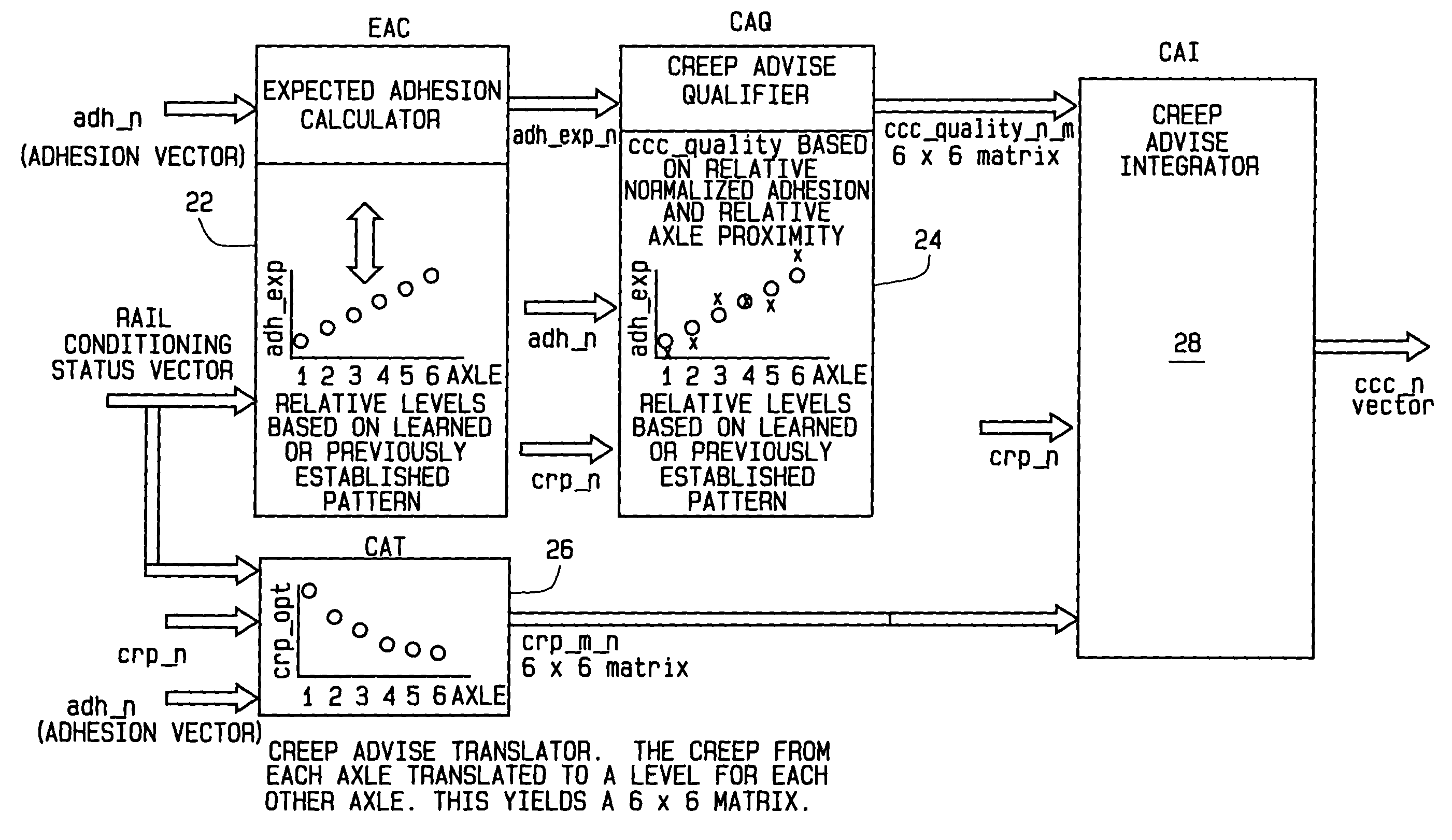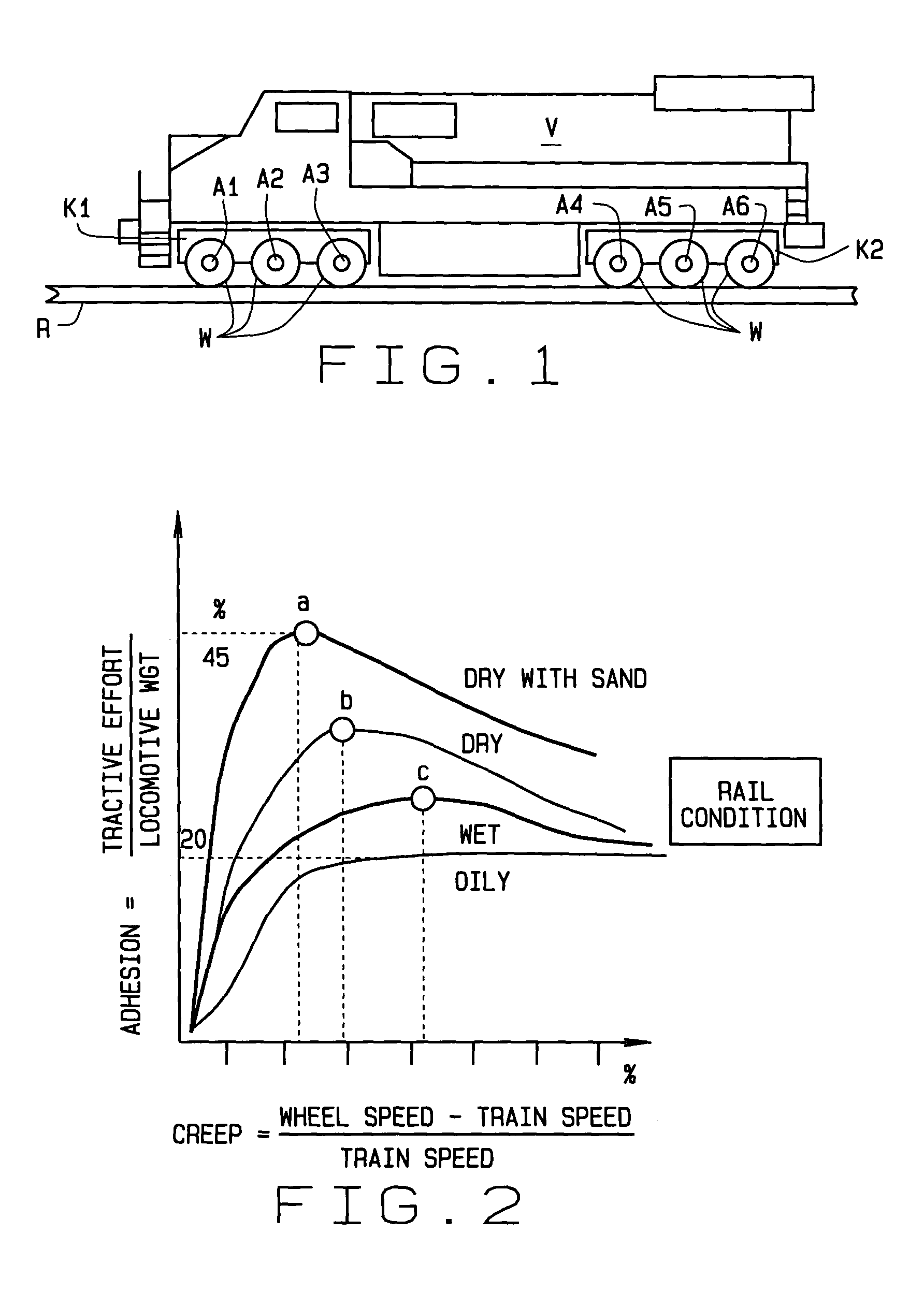Enhanced locomotive adhesion control
a technology of adhesion control and locomotives, applied in the direction of process and machine control, tractors, instruments, etc., can solve the problems of the response time of the locomotive to a change, and achieve the effect of reducing the response time and rapid adjustment of the operation
- Summary
- Abstract
- Description
- Claims
- Application Information
AI Technical Summary
Benefits of technology
Problems solved by technology
Method used
Image
Examples
Embodiment Construction
The following detailed description illustrates the invention by way of example and not by way of limitation. The description clearly enables one skilled in the art to make and use the invention, describes several embodiments, adaptations, variations, alternatives, and uses of the invention, including what is presently believed to be the best mode of carrying out the invention.
Referring to the drawings, as previously described with respect to FIG. 1, a railroad locomotive V has a forward truck K1 and rearward track K2. Each truck supports three axles A1-A3 and A4-A6 respectively. An improved traction control system of the present invention is indicated generally 10 in FIG. 7. System 10 includes a coupled creep control unit (CCC) 12, which, for the locomotive of FIG. 1, is for a six axle locomotive having individual axle creep control. For this purpose, each axle has an associated tractive effort maximizer TEM1-TEM6 respectively. Control unit 12 supplies a separate signal to each m...
PUM
 Login to View More
Login to View More Abstract
Description
Claims
Application Information
 Login to View More
Login to View More - R&D
- Intellectual Property
- Life Sciences
- Materials
- Tech Scout
- Unparalleled Data Quality
- Higher Quality Content
- 60% Fewer Hallucinations
Browse by: Latest US Patents, China's latest patents, Technical Efficacy Thesaurus, Application Domain, Technology Topic, Popular Technical Reports.
© 2025 PatSnap. All rights reserved.Legal|Privacy policy|Modern Slavery Act Transparency Statement|Sitemap|About US| Contact US: help@patsnap.com



